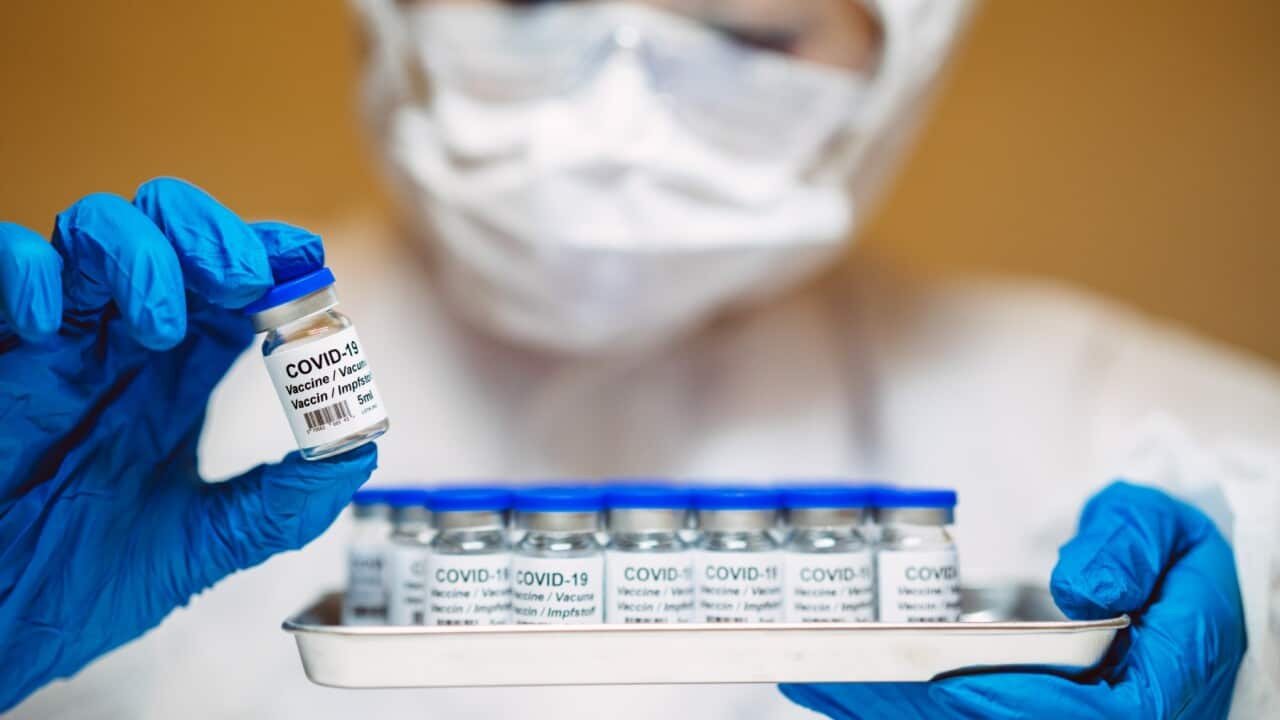The Australian government says everyone over the age of 16 is eligible for a COVID-19 vaccination.
Australia's COVID-19 Vaccine National Rollout Strategy identifies priority populations and locations across the country where vaccines are administrated. Frontline healthcare workers, quarantine and border workers, as well as aged and disability care residents and workers are the priority population in the rollout strategy.
To find out if you can get a COVID-19 vaccination and where to book an appointment visit https://covid-vaccine.healthdirect.gov.au
Children aged between 12 and 15 have been added to Australia's COVID-19 vaccine rollout, and will be eligible to book for a vaccine after September 13th.
Currently, those aged 12-15 years are eligible to get vaccinated if they meet certain criteria.
You can also book an appointment with your GP and find information about the vaccine in your language.
What are the recommended vaccines?
The Australian Technical Advisory Group on Immunisation (ATAGI) advises the Pfizer (Comirnaty) vaccine will be prioritised for people under 60 years of age.
The AstraZeneca vaccine will be prioritised for people aged 60 years and over. However, if you are aged 18-59 you can choose to receive the AstraZeneca vaccine after consulting your health professional and providing consent.
The Moderna vaccine has been provisionally approved for Australians aged 18 and over with a rollout expected from September onwards.
Your vaccination will be stored in a public record
The government has to store some information on the individuals who get vaccinated in order to keep track of who has had it. It's the obligation of the Australian Vaccination Program providers to enter the patient record for each COVID-19 administered vaccine.
The information on individuals' vaccine status is available through My Health Record, Medicare (Immunisation History Statement), or a certificate printed hard copy at the time of vaccination, followed by an electronic copy record via email.
All COVID-19 vaccines are free
The vaccines are free for all Australian citizens, permanent residents and all visa holders. Anyone in Australia on a student, working, skilled, family, partner, refugee, asylum seekers, temporary protection visa holders, humanitarian, regional, bridging or special visa is eligible for a free COVID-19 vaccine.
Individuals in detention facilities are also eligible, including those whose visas have been cancelled.
- Department of Health - COVID-19 Vaccine information in your language.
- Department of Home Affairs - COVID-19 information in your language.
- People in Australia must stay at least 1.5 metres away from others
- If you are experiencing cold or flu symptoms, stay home and arrange a test
- Please check the relevant guidelines for your state or territory: NSW, Victoria, Queensland, Western Australia, South Australia, Northern Territory, ACT, Tasmania.
Share

